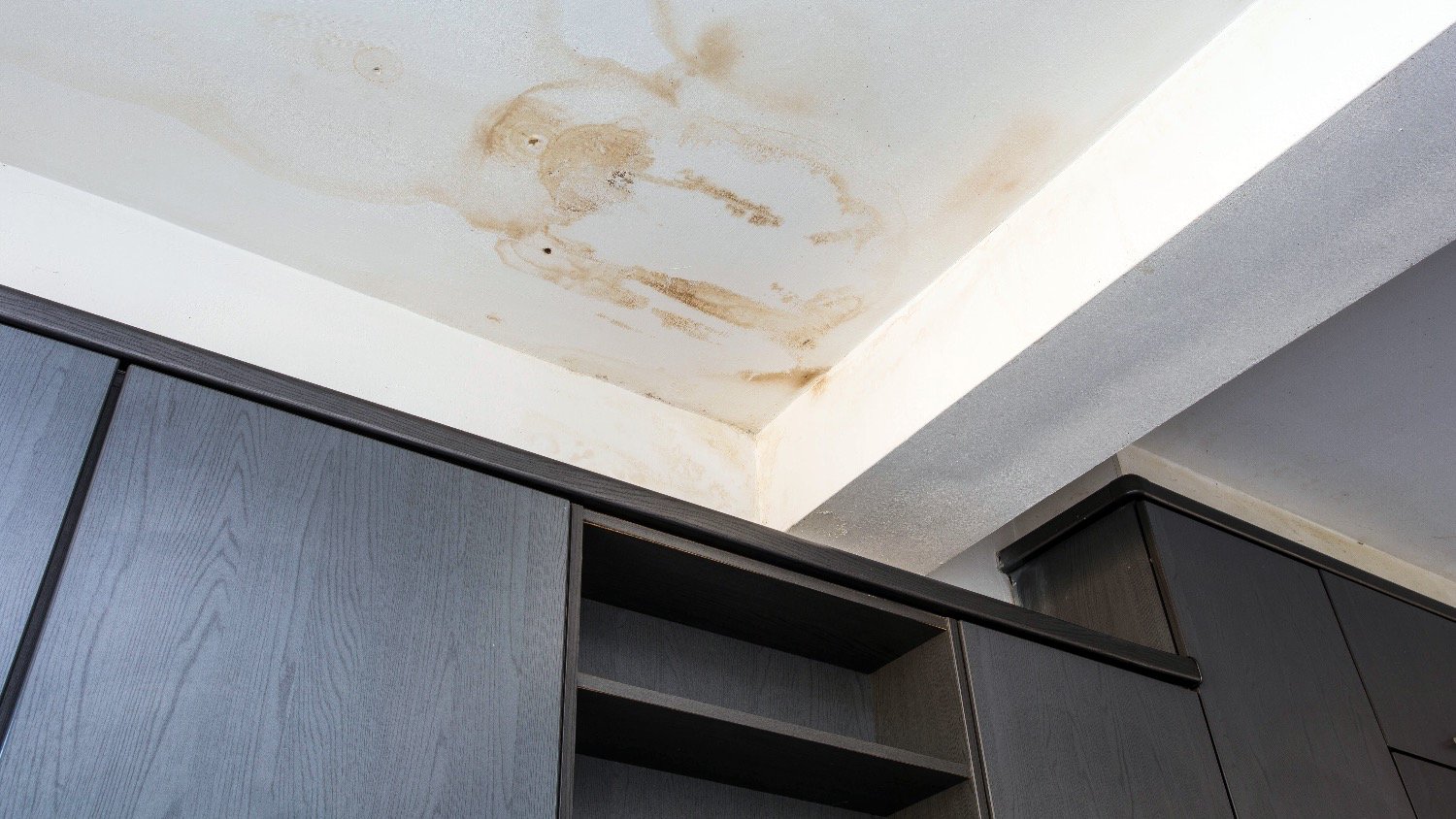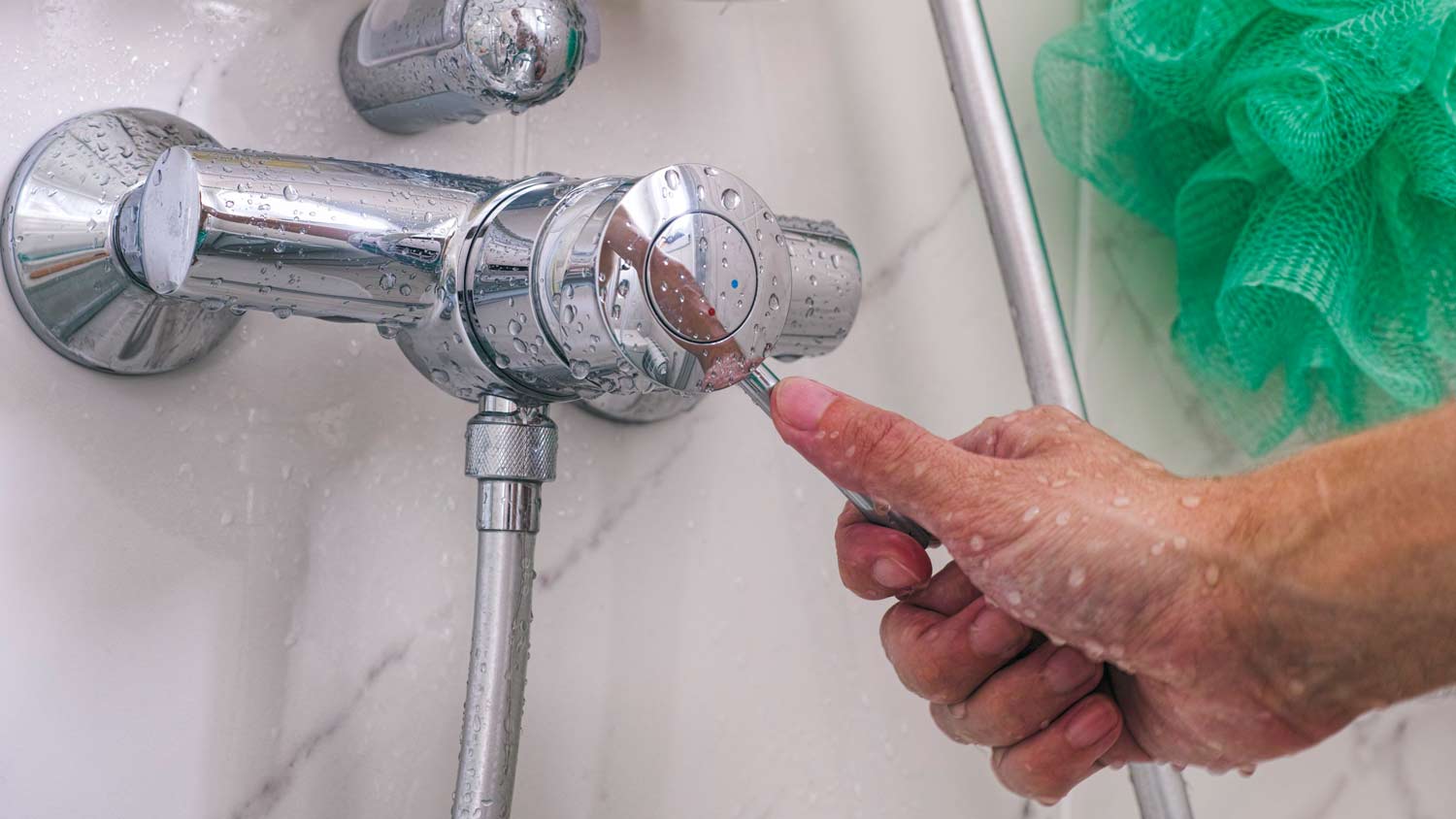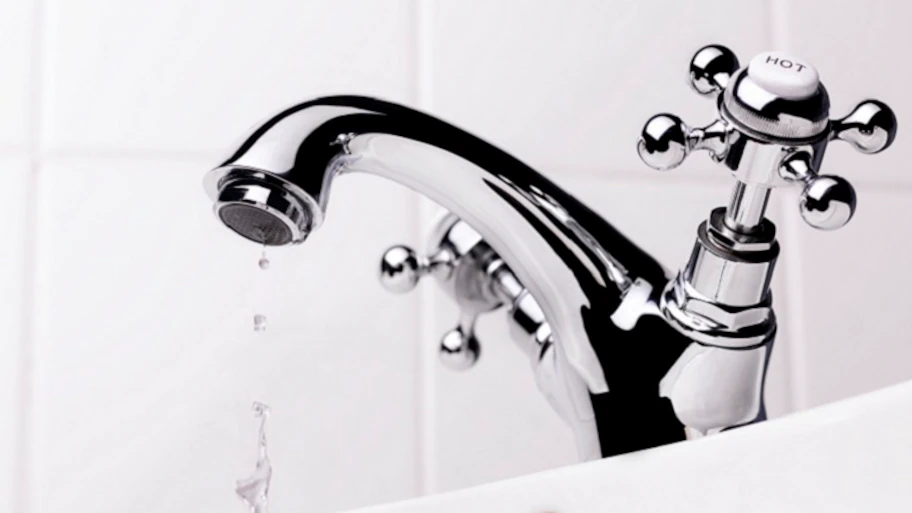Signs of Frozen Pipes: How to Spot Them Quickly
Don’t let a winter wonderland turn into a plumbing nightmare


If little to no water comes out of your faucet, ice could be in your pipes.
Look for cracks, bulges, frost, and condensation on the outside of your pipes.
Listen for odd noises such as gurgling and clanking.
Watch for signs of water damage, such as rings or puddles on your ceilings and walls.
Contact a local plumber immediately if you suspect frozen pipes.
When the temperature drops outside, or the power goes out in the winter, your pipes can freeze and burst, leaving you with expensive, messy water damage. But if you catch frozen pipes early, you can save your home from major flooding. Watch for these six signs of frozen pipes and contact a local plumber right away if you spot any of these issues. Even a small crack in a pipe can spray hundreds of gallons of water into your home.
When and Where Pipes Freeze
If temperatures fall below 32 degrees Fahrenheit for three hours or longer, and your power is out, your pipes can freeze. Water pipes located in unheated areas are especially vulnerable, such as those in the attic, basement, garage, crawl space, or an exterior wall with minimal insulation. Because these pipes are exposed to colder air, they’re more likely to freeze.

6 Signs Your Water Pipes Are Frozen
1. Little to No Running Water
If you turn on your kitchen faucet or shower and only get a slow trickle or no water at all, it could mean that water is frozen in your pipes. The lack of water is often the first frozen pipe symptom that homeowners notice.
2. Crack or Bulge in Pipe
If you see a crack or bulge in a water pipe, especially if ice or water is leaking out, it’s a clear sign that a frozen pipe has burst. Water expands when it freezes, causing the pipe to crack. Contact a local plumber immediately if you notice a cracked or misshapen pipe.
3. Frost or Condensation on Pipes
If you spot frost or condensation accumulating on the outside of an exposed pipe, such as one in your basement, your pipes are likely frozen. Frost and condensation are visible frozen pipe symptoms that indicate your pipes are below the freezing point.
4. Strange Noises
Strange noises are a sure sign that something’s wrong and may indicate frozen pipes. If you hear whistling, gurgling, or banging coming from your water pipes, it could be a sign that ice is traveling through them. You might also hear bubbling noises when you flush a toilet.
5. Water Damage

If you spot signs of water damage in your home, frozen and burst pipes might be to blame. The cost to repair a burst pipe runs about $500 on average, but it’s a necessary expense to protect your home from major water damage. Some common symptoms of water damage include:
Puddles, rings, or water spots on your walls and ceilings.
Dampness on your walls.
Bubbling paint or wallpaper.
Musty, moldy odor.
Sound of rushing or running water.
Sagging or collapsing walls and ceiling.
6. Foul Odor
If you notice a foul scent coming out of your drain or faucet, it could be a sign of frozen pipes. When ice is in a water pipe, it blocks the odors from your food, waste, and grease that would otherwise drain out of your home. Instead, the odor comes back up the pipe and into the air. While there can be other culprits for foul odors coming from your pipes, if it’s winter, frozen pipes are likely to blame.
What to Do If You Suspect Frozen Pipes
You should always try to find frozen pipes in your home if you suspect this is the issue. But at what temperature do pipes freeze? It depends on a few factors, but generally, they'll freeze if temps hit 32 degrees or lower for prolonged periods of time. In many cases, you can unfreeze an exposed frozen pipe with a hair dryer. Never use an open flame to thaw pipes, as this can be seriously risky. It’s also not a great idea to use boiling water down your drain or on your pipes to thaw them, as this may make the issue worse.
If you’re worried the pipes are about to burst, or they already have, shut off the main water valve to your house immediately and contact a plumber. By halting the supply of water to your home, you can avert leaks and water damage until the plumber arrives. A plumber inspects your pipes for leaks and cracks and makes repairs before turning your water supply back on. The cost of a plumber is usually hundreds or thousands of dollars less than the cost of repairing water damage.
In some cases, failure to detect and repair frozen pipes can even damage your water heater, making it even more important to know the signs. Water heater replacement costs around $1,300 on average.
If you're away from your home for an extended period of time during cold months, consider draining your pipes and leaving your water valve off. Without a water supply, you can avoid frozen pipes and leaks while you're away.
What to Avoid if You Have Frozen Pipes
You may be tempted to fix the frozen pipes yourself, but sometimes, that can make the situation even worse and cause more damage. If you have frozen pipes, avoid using the following to thaw the pipes:
Anything with an open flame: Never use an open-flame device, such as a blowtorch, to thaw the pipes.
Gas or propane heater: These devices scream a fire hazard, especially if you leave them running without supervision. You should avoid using gas or propane heaters to thaw your water pipes.
High heat near insulation: If your pipes are insulated, don’t place a heating device next to the insulation, as this can cause fire.
Electric devices directly under the pipes: Since you can’t tell if the frozen pipes are cracked, you should avoid placing electric heating devices close to them. If the pipes leak, the thawed ice can short the electric circuit or cause a fire.
Electric heater near wood siding in the crawl space: While you may be tempted to stick an electric heater into the crawl space, remember that wood can catch on fire if the temperature rises too high.
DIY vs. Hiring a Pro
The best way to prevent pipes from freezing is to winterize them. This can be done easily by yourself, although it could be time-consuming. You can always hire a plumber to insulate your pipes, and most of them charge a standard hourly rate for the job.
If your pipes are frozen, it’s best to contact a pro for defrosting. While there are ways to defrost pipes yourself, you’d be left with a bigger mess if any of the pipes are busted. An emergency plumber costs $100 to $500 on average, but it is a worthy investment compared to the major water damage and electric hazard busted pipes can bring.
If you’d rather try to thaw the pipes yourself, simply turn your house heater a little higher, or add a space heater in the middle of the basement. However, avoid applying direct heat closely to the pipe or using a device with an open flame. Dealing with frozen pipes is a lot easier and safer than a burning home, after all. Improper thawing with drastic temperature changes can also burst a pipe. If you notice water leaking during thawing, turn off the nearest breaker boxes and contact an emergency plumber immediately.
Frequently Asked Questions
While a frozen pipe can thaw on its own, that doesn't mean that it should. Allowing your frozen pipes to thaw on their own can cause serious damage to your plumbing system, water damage in your home, and costly leaks from pipes that are hard to find. The best way to thaw a frozen pipe is by increasing warm air circulation to the pipes. Better yet, take steps to prevent your pipes from freezing at all.
Yes, the thawing process is often the reason frozen pipes burst in the first place. Though it may seem like the freezing itself causes a pipe to burst, it's actually the pressure that builds inside the pipes in your home that really contributes to the pipe bursting. As the ice melts, more pressure builds in the pipes. That pressure increases further if some of the water thaws only to refreeze.





- Gas Plumbers
- Plumbing Repairs
- Sump Pump Installation
- Wood & Pellet Stove Repair
- Shower Repair
- Wood Stove Services
- Emergency Plumbers
- Fire Sprinkler Contractors
- Perc Test Companies
- Toilet Repair & Installation
- Boiler Repair
- Sewer Line Repair
- Faucet Repair
- Main Drain Camera Companies
- Foundation Drain Installation
- French Drains
- Bathtub Replacement
- Subcontractors
- Storm Drain Contractors
- Affordable Plumbing
- Plumbing & Heating Companies
- Bathroom Repair Services
- Sink Installation
- Commercial Plumber
- Barndominium Builders
- Water Line Repair
- Faucet Installation
- Water Line Installation
- Leak Detection
- How to Find Frozen Pipes in Your Home
- How to Prevent Your Pipes From Freezing
- What to Do If Your Pipes Freeze and How to Unfreeze Them
- Do Copper Pipes Freeze and Can You Prevent It?
- Well Water Frozen? Try These Hacks to Fix Frozen Well Water Pipes
- Can Frozen Pipes Cause Blocked Sink Drains?
- 8 Tips to Winterize Your Pipes and Prevent Plumbing Issues
- How To Thaw Frozen Underground Pipes
- At What Temperature Do Pipes Freeze and How Do You Protect Them?
- Can Cold Weather Cause Pipes to Leak? How to Fix and Prevent










